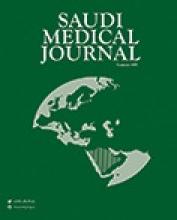Abstract
OBJECTIVE: Megaloblastic anemia during infancy and early childhood often reflects a hereditary disorder of cobalamin's absorption, transport, or intracellular metabolism. There are 3 well defined autosomal recessive syndromes manifesting with megaloblastic anemia due to defects in cobalamin absorption or transport, namely congenital pernicious anemia, Imerslund-Grasbeck syndrome and Transcobalamin II deficiency. The genes responsible for the 3 disorders are gene intrinsic factor (GIF), MGA1 and TCN2, as well as the gene for Transcobalamin I, TCN1 are mapped or cloned, or both.
METHODS: We describe the clinical picture of 7 patients from 3 sibships, belong to one large inbred family who presented with megaloblastic anemia during infancy. The mode of inheritance follows an autosomal recessive pattern and the syndrome was completely reversed by parentral vitamin B12 therapy. The ascertainment of the family was carried out in 1998 in the Princess Rhama Children's Hospital, which is affiliated with Jordan University of Science and Technology, Jordan. We performed linkage analysis in this family for genes or regions involved in the above mentioned disorders.
RESULTS: The genes implicated in the etiology of the previously mentioned disorders were excluded from being responsible for the disorder in this family.
CONCLUSION: The exclusion of the involvement of GIF, MGA1, TCN1 and TCN2 in this family suggests that another gene and its product, involved in cobalamin absorption or transport, remains to be identified. A genome-wide search of the gene implicated in this family may give some insight on that gene, and its function.
- Copyright: © Saudi Medical Journal
This is an open-access article distributed under the terms of the Creative Commons Attribution-Noncommercial-Share Alike 3.0 Unported, which permits unrestricted use, distribution, and reproduction in any medium, provided the original work is properly cited.






